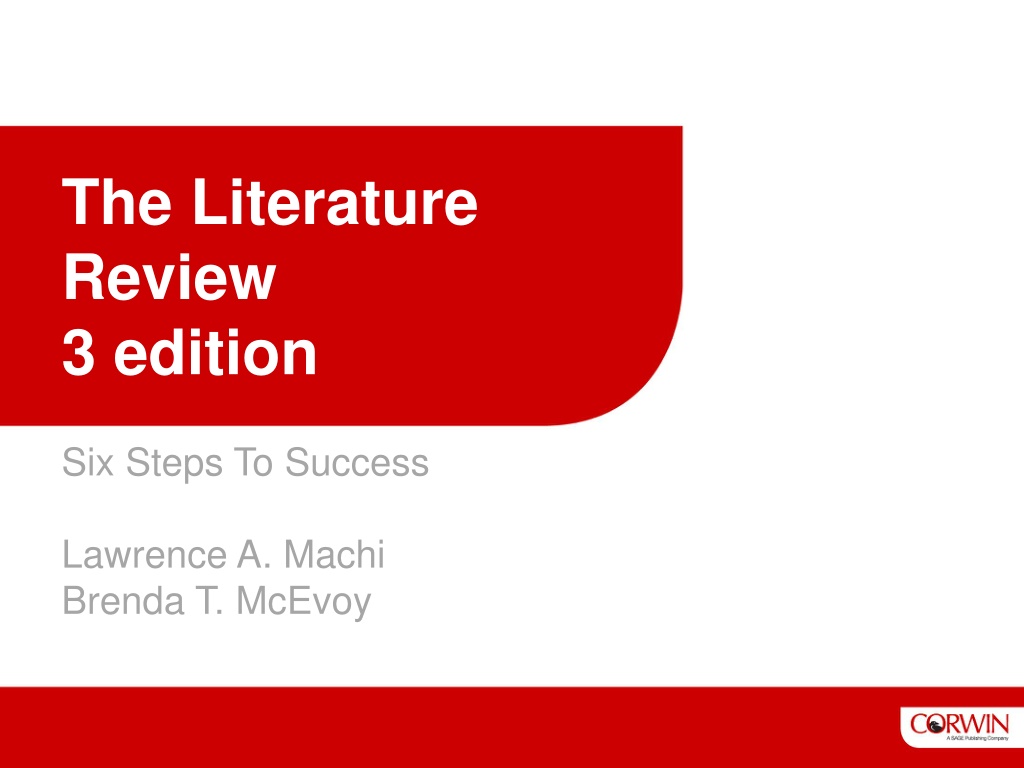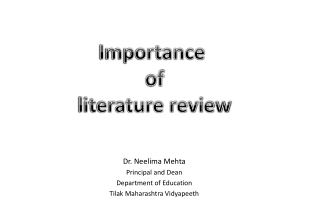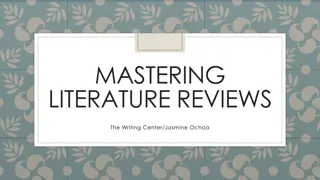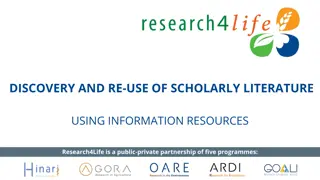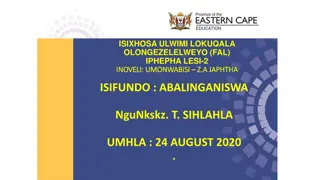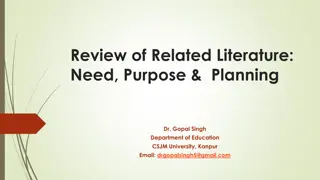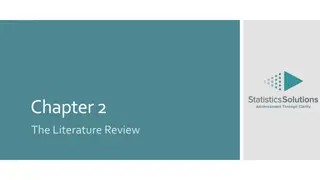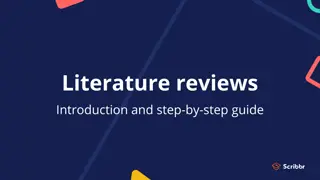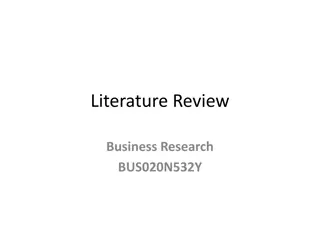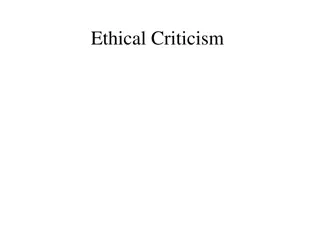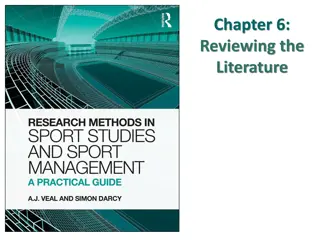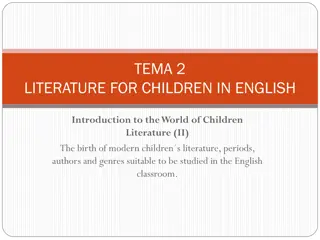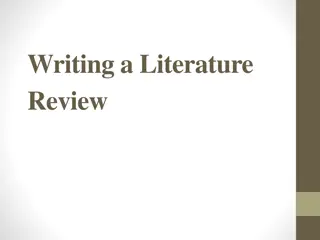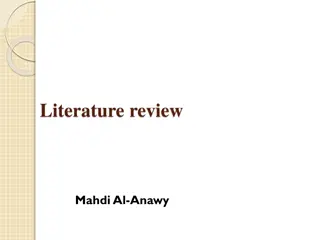Steps to Success in Literature Review
Identify personal research interests, translate them into clear queries, consult with a librarian for efficient library use, and follow specific steps to write a successful literature review.
Download Presentation

Please find below an Image/Link to download the presentation.
The content on the website is provided AS IS for your information and personal use only. It may not be sold, licensed, or shared on other websites without obtaining consent from the author.If you encounter any issues during the download, it is possible that the publisher has removed the file from their server.
You are allowed to download the files provided on this website for personal or commercial use, subject to the condition that they are used lawfully. All files are the property of their respective owners.
The content on the website is provided AS IS for your information and personal use only. It may not be sold, licensed, or shared on other websites without obtaining consent from the author.
E N D
Presentation Transcript
The Literature Review 3 edition Six Steps To Success Lawrence A. Machi Brenda T. McEvoy
1 Step One: Select a Topic Personal Interest to Formal Research Topic
TASK 1. IDENTIFYING A SUBJECT FOR STUDY Most applied research in the social sciences begins by selecting an everyday problem, interest, or concern for further study. A hasty choice can have catastrophic consequences. A subject for study should ignite curiosity, engage emotions, and challenge thinking. Personal reflection and introspection will uncover potential interests. The 5 source areas to search for a subject of study. Professional experience Suggestions from experts Academic journals Topical debates within your profession Examining academic theory in your field
TASK 2. TRANSLATING THE PERSONAL INTEREST OR CONCERN INTO A RESEARCH QUERY The research interest is defined by its wording and key ideas Interests tend to be first stated in a vague and generalized way. Interest statements need to be precisely defined. Develop exact definitions for each of the key ideas of the interest statement. Activity 1. Focusing a Research Interest Narrow the interest to one clearly defined subject. Determine your unit of analysis. Activity 2. Limiting the Interest Choose the perspective or vantage point. Choice of perspective depends on the subject of study and the unit of analysis chosen. Link the subject and unit of analysis to the appropriate academic discipline. Activity 3. Selecting a Perspective Reflect on the revised interest statement and academic discipline to which it is connected. Develop a clear and concise written interest statement. Why does this statement lead to an important contribution to the field or to the theory? Does it still hold your interest? Activity 4. Reflection: The Key to Interest Selection and Developing the Research Query Statement
The Basic Rules for Library Use Consult with the research librarian early and often. Develop a positive working relationship . The research librarian is a mentor and a guide. Know your librarian Have a clear plan and purpose for every library visit. Know what you are looking for and where to get it. Have strategy for your library research. Have a schedule of work and specific outcomes . Before ending the session, plan the next steps. Be purposeful Develop and organize your cataloging and documenting tools first. Use cataloging tools to codify the library materials for easy reference and identification. Use documentation tools to store notes, quotes, and abstracts on the library material you are collecting. Build a system for information collection, documentation, and retrieval. Preparation equals efficiency
TASK 4. WRITE THE PRELIMINARY RESEARCH TOPIC STATEMENT 3. 4. 2. 1. Conduct a first conversation with a research librarian. Define the key terms of the interest statement. Translate the key terms and core ideas of the interest statement. Rewrite the interest statement into a preliminary topic statement.
Step 1. Select a Topic Task 1. Identify a Subject for Study Task 2. Translate the Personal Interest or Concern Into a Research Query Activity 1. Focus a Research Interest Activity 2. Limit the Interest Activity 3. Select a Perspective Activity 4. Reflect and Develop the Query Statement Let s check our understandin g Task 3. Link the Research Query to the Appropriate Discipline Activity 1. Become Familiar With the Academic Terminology Concerning the Study Topic Activity 2. Gain Entry to the Literature Concerning the Subject of the Study Activity 3. Consult With a Research Librarian Task 4. Write the Preliminary Research Topic Statement
